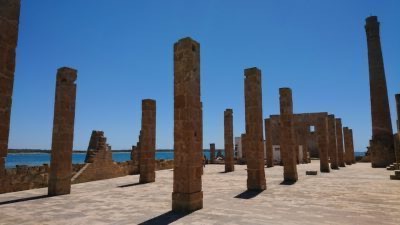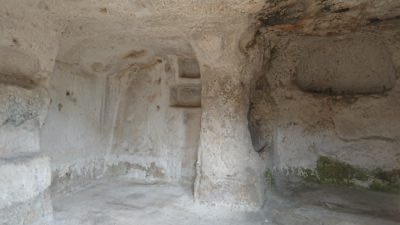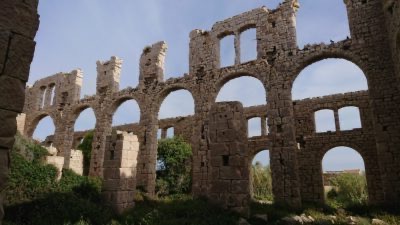Exploring abandoned places to bring to light ancient beauties: here's how to go on an adventure in the wonderful South-East Sicily. Three authentic places to discover and observe with respect and curiosity!
Lovers of history, nostalgic for the past, new explorers, this is the post for you. Prepare sunscreen, camera, water and some Sicilian delicacies: let's start the exploration!
Urbex: exploring abandoned places
THEUrbex (Urban Exploration) is a singular phenomenon that has spread in recent years: explore abandoned places to bring back ancient beauties. The places I propose are not "extreme" from Urbex, but the spirit with which to visit them is certainly that of the urban explorer. First of all curiosity, love for the territory and, above all, respect for the properties in which one enters. Not for nothing the Urbexer motto is “take nothing but photographs, leave nothing but footprints”.

Always pay attention: some of these structures have been abandoned for some time, and it is therefore possible that they are not completely safe. Don't panic! They are all easily accessible, easily reachable by car within a day from Ragusa or Syracuse.
So here's how to explore 3 places from Urbex in South-East Sicily
1. The Trigona and the Byzantine Catacombs
Located between Noto and Pachino, the Vendicari Reserve is a place rich in history as well as being one of the Italian areas of greatest ornithological interest. Inside, there are several traces of the past: some from the Greek era, such as the majestic latomie (stone quarries) and the short stretch of the ancient Via Elorina, others medieval such as the Swabian Tower, and those of modern times such as the remains of the Tonnara Vendicari.

Leave the car at the south entrance of the Reserve, Citadel entrance, to walk to the remains of one of the oldest churches dating back to the Byzantine era in Sicily, the Trigona.
The main feature of these churches, called Cube, was to have a square plan with three apses and a central dome. The building is well preserved, albeit with evident signs of aging. Paying close attention to where you put your feet (on the floor, some wooden boards and stones could cause stumbling), you can go inside to better admire the joints of the various blocks that compose it and the dome. Savor the spirit of the past by imagining the frescoes that once covered the walls.
In the vicinity of the Trigona, you can see the remains of the Byzantine necropolis. The catacombs, containing single and family tombs, are preserved in good condition. You can go into it, but you will need a light and a little courage. Being a dark and relatively narrow place, I do not recommend entry to the most claustrophobic. Pay attention to where you put your feet: some tombs are placed on the floor and there are boulders all along the path.
2. Chiafura Archaeological Park
Area of great historical interest is undoubtedly theancient district of Chiafura, a rock settlement dug into the rocks of the city of Scicli.
This area, dating back to the Early Middle Ages, was inhabited on and off until about the mid-900s! There are numerous historical testimonies concerning the site. The most recent, in 1959, is the arrival in Scicli of some Italian intellectuals (including Levi, Pasolini, Guttuso) to ascertain the state in which there lived a hundred people who still lived in the stone houses, in conditions identical to those of the their ancestors troglodytes.
You will have to go through some modest climbs to get to the Chiafura entrance gate. It is impressive to find yourself in front of a real city, made up of cave houses built on terraces, dry stone walls and connecting paths along all the houses.
The site has been redeveloped as "Archaeological route”, Thanks also to the funds of the European Union, but to date it is still being completed. There are several works in progress and construction sites present but, paying close attention, you can lean inside the houses.

The houses are all more or less similar, with different niches carved into the rock for multiple uses. The emotional impact of entering the caves is considerable, especially when imagining the conditions in which the inhabitants of Chiafura lived. If curiosity drives you to look for more concrete information, ask Mr. Carmelo Raimondo, former Chiafurano and manager of the “A rutta ri Ron Carmelu”, the only cave in Scicli to be equipped as a museum.
3. Pen furnace
Built in the Pisciotto district of Sampieri, the Furnace Pen it was a factory that produced bricks (ceramic products for building) in the early decades of the 900th century. Overlooking the sea, near the railway and a clay quarry, the complex was in a strategic position so that its products were exported to many Mediterranean countries. The activity of the furnace ceased in 1924 due to an arson still unsolved.
Over the years, various redevelopments have been evaluated for the building but, to date, the only use made has been the cinematographic one, appearing as a location in some episodes of “Il Commissario Montalbano”.
Looking at it, one cannot but feel a great fascination for it ex-industry. You can go into its ruins but be careful: the ground is uneven due to the partial collapse of the pavement. Positive note of this is that in some areas it is possible to glimpse underground work areas. The chimney, at the time 41 meters high, has partially collapsed but, leaning out from one of the openings at the base, you can see the details of the oven.
Looking closely at the ground, you can find traces of the artifacts that were produced in the furnace: bricks, tiles and bricks, some still with the trademark! It almost seems to hear the noise of the workers at work, overlooking that of the sea.

Places from Urbex in a wonderful land
Sicily is a wonderful region: in every corner of its land you can find beautiful beaches, superlative food and a lot of history.
Each building has its own history: it is born, grows and, just like people, comes to an end. But, unlike human beings, objects remain there, telling us their story, our story. Let's find some time to sit and listen to them ...


























